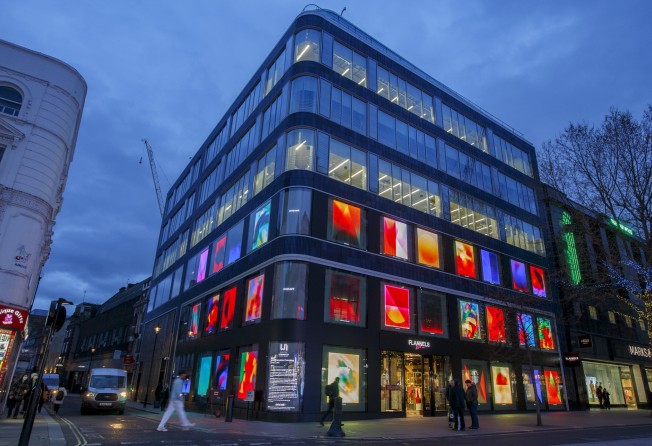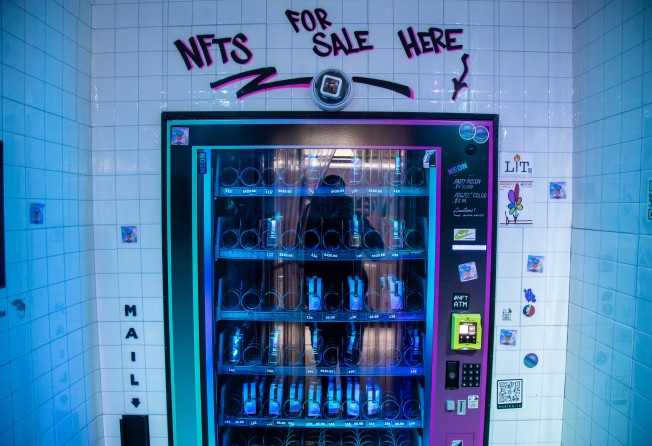
NFT platform provides a viable market for struggling, marginalised artists
- Far removed from the elite and often discriminatory world of traditional art, NFT marketplaces are democratised spaces where emerging artists can connect with buyers, receive fair compensation for their work and continue to benefit as it gains value over time

NFTs, or non-fungible tokens, are a lucky draw for investors looking to make a quick fortune, a gold mine for fraudsters and scammers, and hopefully, an opportunity to make the world a better place.
Estimated to be worth US$41 billion last year, the global NFT market is inevitably a mixed bag of both legitimate and illegitimate activity. But how NFTs could be a positive driver of change remains unknown.
Given their relative infancy, we still know very little about the social impact of NFTs, particularly on those who help to make them possible: artists. By this I do not refer to “elite” artists with connections to major galleries and billionaire clientele, but ordinary artists, many of whom are struggling to get recognition and make ends meet.
My study on artists across multiple countries who have embraced NFTs reveals some interesting insights. Emerging and aspiring artists in both developed and less developed countries frequently face hurdles in selling their first work and gaining public notice.

To some extent, these hurdles can be attributed to their lack of legitimacy as newcomers to the market. But there also exist many forms of discrimination – against race, gender, age, ethnicity, sexual orientation and beyond – that can tip the balance between fame and fortune and being “desk rejected” and invisible.
There are economic and non-economic reasons for artists to join the NFT space. One is that middlemen – galleries, brokers, agents – often charge high commission fees for an artwork. Artists want a fairer split, but have no power to negotiate.
Moreover, the conventional art market only rewards artists for the primary market sale. Beyond that, an artist has no further income rights, even if the artwork grows in value. Yet without fair compensation, artists cannot continue to create. Even the great works of Leonardo da Vinci were only possible thanks to commissions.
Take Visithra Manikam, a self-taught Malaysian NFT artist, for instance; before creating NFTs, she had to rely on a full-time, non-art related job to finance her passion for ethnic art. Her dream of becoming a full-time artist was never possible because she could not get a footing in any galleries.
After losing her job during the pandemic, she turned to NFTs last year and quickly went from unknown painter to one of the most successful NFT artists of Southeast Asia, selling hundreds of ethnic-inspired NFTs.
NFTs support artists in several ways. First, the NFT space is, prima facie, a global marketplace which artists can enter free from unfair barriers. Every artist has an equal chance of being listed on platforms like OpenSea, Foundation, or Objkt. These marketplace are akin to Amazon.com – except that unlike Amazon vendors, an NFT artist gets most (i.e. 90 per cent or more) of the income from a sale after deducting small transaction fees (e.g. gas fees).

Second, NFT marketplaces pool a large variety of collectors, investors and buyers, making it easier for more niche artists to connect with their target audience. This “efficient matching” gives artists their much-needed breakthrough, after which they can continue to build their reputation and portfolio.
Third, the NFT market facilitates transparent transactions, in which artists have the power to determine not only the initial price of their art, but also the percentage of royalties they will receive in subsequent sales. A smart contract embedded in each NFT means the work can always be traced back to its original creator. Thus, each time a piece changes hands, the artist is automatically compensated.
Fourth, the NFT world is community-oriented. It encourages a culture of cooperation, with more experienced creators showing newcomers the ropes, from how to mint an artwork to how to get their work noticed. Moreover, artists help each other out by collecting one another’s work. This practice helps inexperienced, unknown, or stigmatised artists gain confidence and hone their skills.
Certainly, success in the NFT world is often driven by novelty. While Manikam found success in creating original ethnic art, there are many other examples of other non-traditional artists who became successful NFT creators in a short span of time, from transgender NFT artist like Fewocious, to very young artists – like 13-year-old Nyla Hayes and 14-year-old Laya Mathikshara – who offer a unique artistic perspective in addition to one-of-a-kind pieces.
Establishing clear social goals can also work well. One example is Addien Fachruroji, an NFT artist who promises to provide a kilogram of food for stray cats for every NFT he sells. This initiative helped him sell several NFTs to international buyers.
Of course, collectors are looking for value in their purchase, so high quality art is a must, regardless of an artists’ style, background or niche.
I argue that Web3 and the NFT in particular has and will continue to liberate artists in ways we have never seen before. Not all artists will dive down the NFT rabbit hole, and not all those who do will be successful, but they will certainly be afforded an easier and fairer path to success than the traditional art world offers.
Advancements in the form of more secure, scalable, interoperable and eco-friendly blockchain will only make NFTs better. NFT art has and will continue to offer opportunities for many young and disadvantaged artists to achieve their dreams.
Not all NFTs are a scam. I foresee that a few years from now, every valuable object in the physical world will have its “virtual twin” in the form of NFTs, while the cost of minting NFTs will be so cheap as to make the practice ubiquitous in our daily lives.
Yanto Chandra is associate professor at The Hong Kong Polytechnic University’s Department of Applied Social Sciences. The opinion expressed is his own. Email: [email protected]
